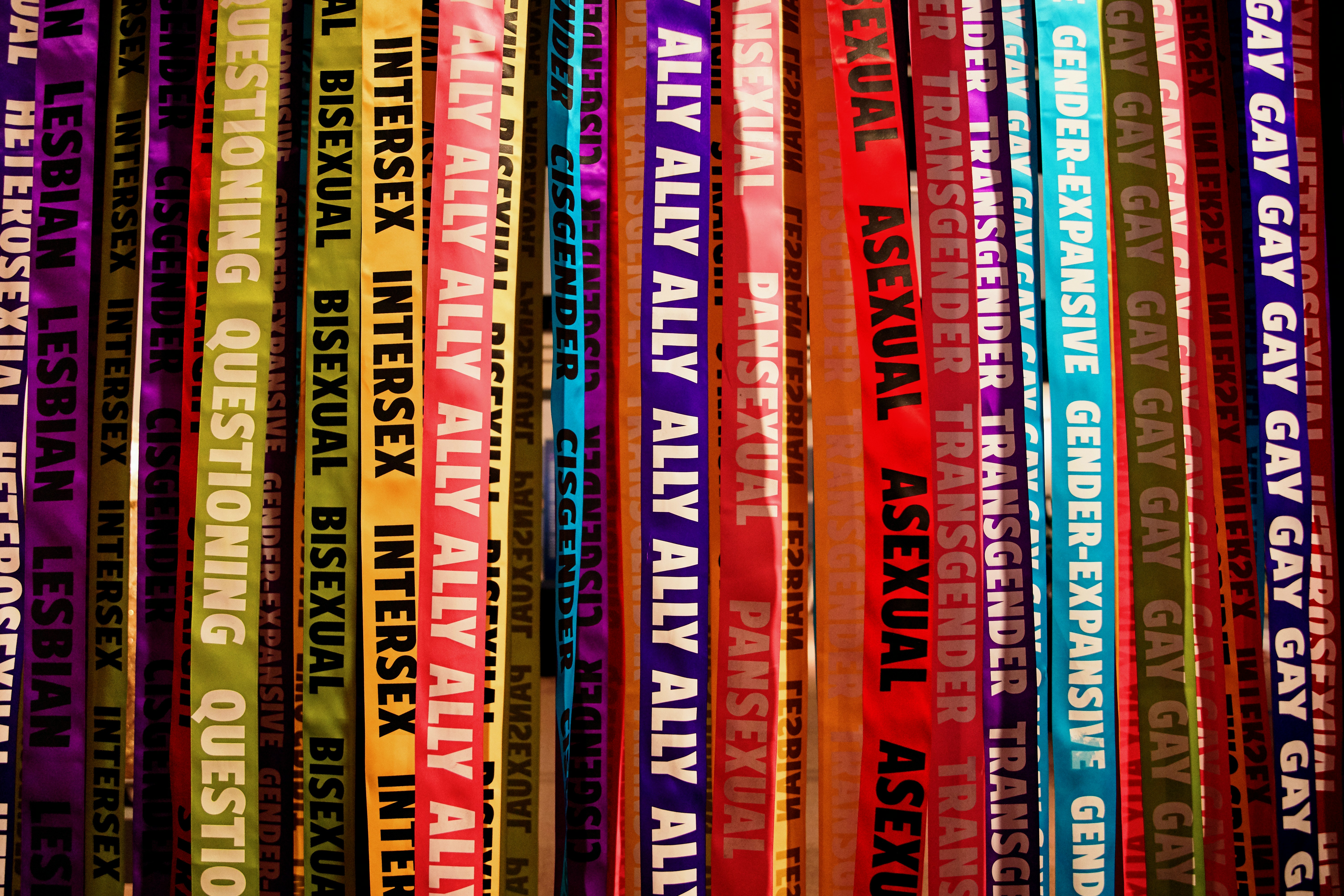Defining LGBTQ: More Than Just a Label
The acronym LGBTQ stands for Lesbian, Gay, Bisexual, Transgender, and Queer, and serves as a collective term for a diverse group of individuals whose identities and experiences extend beyond traditional definitions of gender and sexuality. The origins of the term can be traced back to the mid-20th century, when activists began organizing for equal rights and recognition. Initially, the acronym was simply limited to “gay” and “lesbian,” but as awareness and understanding increased, additional identities were integrated to embrace the multifaceted nature of human experiences related to gender and sexuality.
Each component of the LGBTQ acronym represents distinct identities: Lesbians are women who are attracted to other women; gay individuals usually refer to men attracted to men; bisexual people are those who are attracted to more than one gender; transgender individuals have a gender identity that differs from their assigned sex at birth; and Queer, a term that has historically been used as a slur, has been reclaimed by many to represent a non-normative understanding of gender and sexuality. These categories are important for acknowledging the diversity of experiences and the social, cultural, and political dynamics each group faces.
Identifying as part of the LGBTQ community often entails navigating societal implications, including stigma, discrimination, and varying levels of acceptance. Historically, LGBTQ individuals have faced marginalization, leading to movements advocating for civil rights, equality, and recognition. As the understanding of sexual orientation and gender identity continues to evolve, the LGBTQ acronym reflects an ongoing dialogue about identity, intersecting factors, and individual experiences that shape how people perceive themselves and their place in society.
Thus, the LGBTQ designation transcends mere labels, encapsulating a rich tapestry of identities and lived experiences that contribute to our broader understanding of human behavior and identity formation. Through this lens, we can begin to appreciate the complexity of the LGBTQ community and the significance of its representation in societal contexts.
The Psychology of Sexual Fetishes
Sexual fetishes are often described as strong sexual interests in specific objects, activities, or body parts that are not typically considered inherently sexual. Understanding the psychology behind these fetishes is essential for differentiating them from sexual orientation. Various psychological theories attempt to explain the development of sexual fetishes, including classical conditioning, operant conditioning, and cultural influences.
Classical conditioning suggests that certain stimuli can become associated with sexual arousal through repeated exposure. For instance, if an individual experiences sexual excitement in conjunction with a specific object, such as footwear, they may develop a fetish for that item. Operant conditioning can also play a role; if engaging in fetishistic behavior produces rewarding experiences, individuals may seek out those behaviors more frequently, reinforcing the fetish over time.
Cultural influences also shape sexual interests. Social norms, media representation, and individual experiences can all impact what a person finds sexually appealing. This context can lead to divergent fetishistic expressions across different cultures and communities. Personal experiences, such as formative sexual encounters or family dynamics, further contribute to the development of fetishes. The interplay between these psychological factors manifests uniquely in each individual, illustrating the complexity of human sexuality.
The intersection of LGBTQ identities and fetishistic tendencies adds another layer to this understanding. Individuals within the LGBTQ community may experience sexual fetishes similar to those outside of it, but cultural acceptance and personal experience can filter their expressions. It’s crucial to recognize that while some may experience their sexual identity and fetishes as intertwined, they are not synonymous; LGBTQ identities reflect a person’s sexual orientation, whereas fetishes pertain specifically to sexual interests. This distinction helps elucidate the multifaceted nature of human sexuality and the vast spectrum of experiences within the LGBTQ community.
Gender Identity versus Sexual Fetish: Understanding the Distinctions
Gender identity and sexual fetishism are often mistakenly conflated, yet they represent fundamentally different aspects of human experience. Gender identity refers to an individual’s deeply held sense of being male, female, or something else, which may not necessarily align with the sex assigned at birth. This identity is shaped by a combination of biological, psychological, and social factors. For instance, hormonal influences during prenatal development, societal expectations, and personal experiences all contribute to how one perceives their gender.
In contrast, sexual fetishism is characterized by an intense sexual attraction to specific objects, body parts, or particular scenarios that are not inherently sexual. Fetishes can vary widely, encompassing a range of interests from clothing or materials to specific types of actions. While sexual attraction is a distinct human experience, it does not inherently provide insight into an individual’s gender identity. Many individuals with diverse sexual interests do not identify as part of the LGBTQ community, just as many who do identify within this spectrum may not engage in fetishistic behavior.
Understanding the stark distinctions between gender identity and sexual fetishism is crucial, particularly when discussing LGBTQ identities. Gender expression and identity often serve as core facets of an individual’s integrated sense of self that encompass their experiences, community ties, and personal feelings. Conversely, sexual fetishes exist within the realm of sexual attraction and do not influence a person’s core identity in the same way. By recognizing that LGBTQ identities are not merely reducible to sexual interests but are complex constructs involving directly related factors, we can foster a more nuanced understanding of human sexuality and identity.
Implications for Acceptance and Discourse in Society
The classification of LGBTQ identities has significant implications for societal acceptance and discourse. Viewing these identities strictly through the lens of sexual fetishes can lead to a detrimental misunderstanding of the legitimacy of LGBTQ experiences. When sexual orientation and gender identity are perceived merely as deviations or fetishes, individuals belonging to these communities face increased stigmatization, undermining their right to exist authentically. This misunderstanding can perpetuate harmful stereotypes and foster environments where discrimination is normalized, creating a ripple effect across both the LGBTQ community and mainstream society.
Moreover, this narrow perspective can inhibit meaningful dialogue and advocacy for LGBTQ rights. Discussions couched in terms of fetishization often dismiss the complexity of gender identity, reducing what are inherently deep-rooted aspects of identity to superficial behaviors. Conversely, recognizing LGBTQ identities as valid expressions of gender and sexuality encourages a more nuanced understanding of human experience, paving the way for greater empathy and support. Fostering acceptance through education about diverse identities can help dismantle stereotypes and lead to more informed discussions about the rights and needs of LGBTQ individuals.
Implementing comprehensive educational programs that cover the spectrum of sexual orientation and gender identity is paramount in combatting misinformation and hostility. As society becomes increasingly aware of LGBTQ issues, advocacy must also focus on amplifying the voices of individuals within the community. By promoting narratives that reflect the authentic lived experiences of LGBTQ persons, society can move towards a more inclusive approach that regards these identities as multifaceted elements of humanity, rather than as stigmatized or fetishized phenomena.
Ultimately, a shift in perspective from viewing LGBTQ identities as mere fetishes to acknowledging them as legitimate expressions of self will contribute to a more compassionate and informed society, enabling broader acceptance and encouraging constructive discourse.


